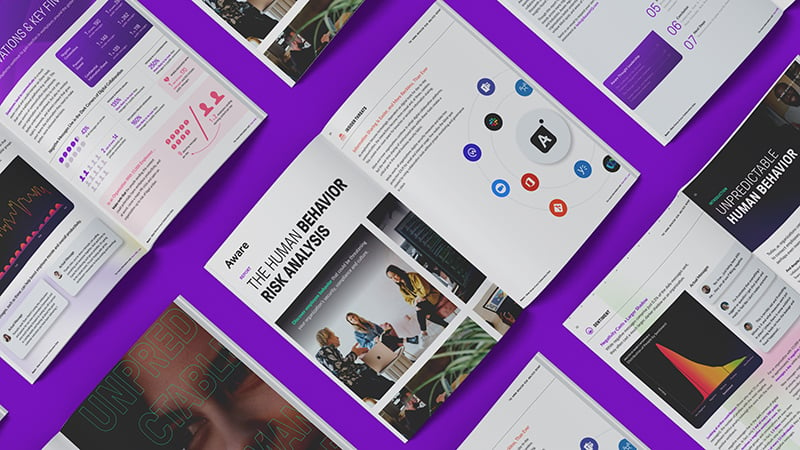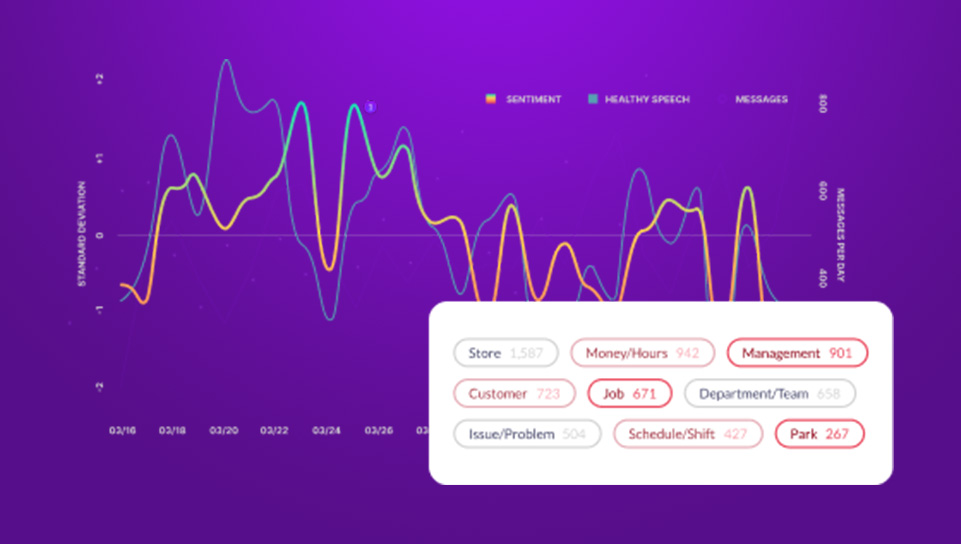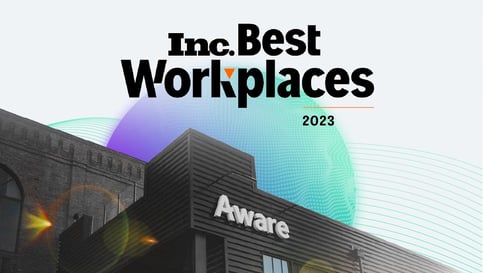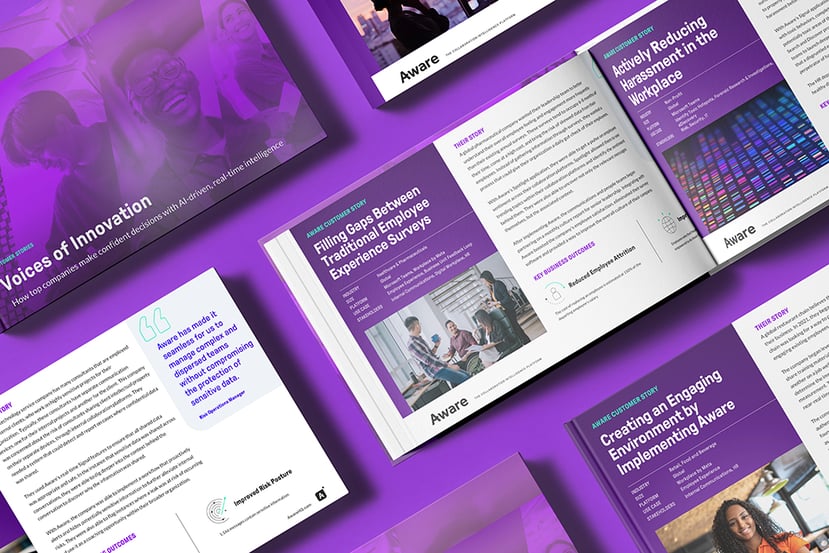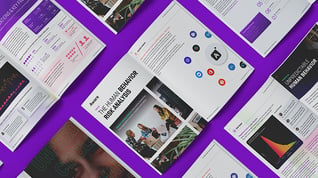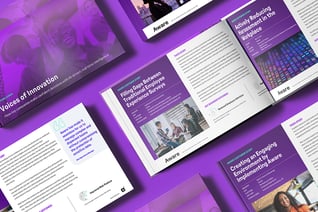HIPAA Compliance & Healthcare Collaboration Tools: What You Need to Know [Infographic]
by Aware
While the day-to-day work in healthcare is fast-paced and nonstop, many organizations encounter barriers when it comes to sharing information.
Infrequent communication and interactions between medical teams results in a lapse of critical information, often affecting the delivery of quality care.
Contents
- The Communication Disconnect in Healthcare
- Real Examples of Connected Healthcare Organizations
- HIPAA Compliance & Enterprise Collaboration
- HIPAA Compliance Best Practices [Infographic]
- Examples of Digital Workplace HIPAA Violations
- How to Prevent HIPAA Violations in Workplace, Teams or Slack
- How do I prevent HIPAA Privacy Rule Violations in Workplace, Teams or Slack?
- How do I prevent HIPAA Security Rule Violations in Workplace, Teams or Slack?
- How do I prevent HIPAA Omnibus Rule Violations in Workplace, Teams or Slack?
- How do I prevent HIPAA Breach Notification Rule Violations in Workplace, Teams or Slack?
The Communication Disconnect in Healthcare
One study showed that 77% of physicians could not even name the nurse caring for their patient. This disconnect is a problem, as miscommunication is the root cause of 91% of medical errors reported by resident doctors. Both your employees and your patients deserve a more personal, integrated approach to medical care.
Inefficient communication leads to disconnected employees and poor patient experience, ultimately resulting in a less-than-stellar reputation. Across all areas of the healthcare industry, getting communication right is vital to employee experience and patient outcomes. Inefficient communication between practitioners, administrations, specialists and aides slows the delivery of care to sick patients and creates a tangled web of information that cuts productivity.
The cumulative impact of ineffective communication could cost a patient their well-being—or even their life.
Real Examples of Connected Healthcare Organizations
Collaboration technologies, such as Workplace from Meta (formerly Facebook), Slack and Microsoft Teams, help organizations save money and time when they create a space for real-time information sharing and knowledge access.
Memorial Health System Adopts Workplace from Meta
Memorial Health System frequently held large staff-wide events and weekly meetings. However, when employees could not attend—for either personal or professional reasons—they found themselves falling behind and out of the loop. After adopting Workplace from Meta, they were able to communicate more effectively with all employees and save the money and time it took to hold company-wide events and meetings.
St. Luke's University Health Network Adopts Microsoft Teams
St. Luke’s University Health Network adopted Microsoft Teams after recognizing their employees needed a way to securely share information and documents with one another. Reduced time spent on paperwork and information searching allowed healthcare employees to concentrate on what they do best: caring for their patients.
HIPAA Compliance & Enterprise Collaboration
The Health Insurance Portability and Accountability Act (HIPAA) is a federal regulation that secures patient confidentiality. HIPAA affirms the right that a patient has to their body and the information associated to their private health. HIPAA violations can range from $100 to $50,000 per incident.
It’s essential for modern healthcare organizations to identify tools that accelerate communication between employees while maintaining HIPAA compliance.
Are tools like Workplace from Meta, Teams and Slack HIPAA compliant?
While mainstream collaboration tools take great measures to protect conversational data from external breach, employees can behave in ways that carry risk of HIPAA violations. For example, without the proper risk management measures in place, it is very easy for medical professionals to send public or private messages that contain Protected Health Information (PHI).
To shield against insider threats caused by user negligence, HIPAA-compliant organizations should implement specialized risk management solutions to control disclosure of patient information in collaboration tools.
Healthcare professionals have a responsibility to the medical needs of patients, but also to the privacy and security of their information. Inappropriate use of collaboration tools will open a healthcare provider to HIPAA risk.
HIPAA Compliance Best Practices [Infographic]
%20-%20Page%201.png?width=1200&length=1200&name=Best%20Practices%20(8.5%20X%2011)%20-%20Page%201.png)
%20-%20Page%202.png?width=1200&length=1200&name=Best%20Practices%20(8.5%20X%2011)%20-%20Page%202.png)
%20-%20Page%203.png?width=1200&length=1200&name=Best%20Practices%20(8.5%20X%2011)%20-%20Page%203.png)
%20-%20Page%204.png?width=1200&length=1200&name=Best%20Practices%20(8.5%20X%2011)%20-%20Page%204.png)
%20-%20Page%205.png?width=1200&length=1200&name=Best%20Practices%20(8.5%20X%2011)%20-%20Page%205.png)
%20-%20Page%206.png?width=1200&length=1200&name=Best%20Practices%20(8.5%20X%2011)%20-%20Page%206.png)
%20-%20Page%207.png?width=1200&length=1200&name=Best%20Practices%20(8.5%20X%2011)%20-%20Page%207.png)
Examples of Digital Workplace HIPAA Violations
3 Common HIPAA Violations
- Sharing private patient or Protected Health Information (PHI)
- Misusing File Content and File Types
- Public Inquiries That Violate a Patient's Privacy
1. Sharing Private Patient or Protected Health Information
Patient information is sensitive and unnecessary access to personal data is considered a HIPAA violation. But when it comes to celebrity healthcare, HIPAA violations aren’t hard to find. Public figures including Britney Spears, Leonardo DiCaprio and Kim Kardashian have all had their medical records accessed in breach of HIPAA.
In 2008, healthcare workers leaked Maria Shriver’s medical records to the press, which led her ex-husband and then governor Arnold Schwarzenegger to sign two bills increasing the fines for HIPAA violations in California.
2. Misusing File Content and File Types
Healthcare organizations must also take steps to protect sensitive patient information by safeguarding how they transmit and where they store files. In 2016, five physicians paid a six-figure settlement for posting medical procedure dates on a public cloud calendar.
3. Making Public Inquiries That Violate Patient Privacy
Employees often use collaboration tools to ask colleagues about industry best practices or advice on specific work challenges. This is a great use of the tool, leading to increased knowledge sharing and more effective outcomes. However, without appropriate risk management measures in place, it can lead to HIPAA violations due to frontline workers inadvertently sharing PHI when simply looking for answers to general questions.
How to Prevent HIPAA Violations in Workplace, Teams or Slack
It’s important that healthcare organizations pair collaboration tools with a compliance adherence solution to protect patient information as well as avoid hefty fines and brand reputation costs.
Prevent HIPAA Privacy Rule Violations in Enterprise Collaboration
The HIPAA Privacy Rule establishes a set of national standards for the protection of health information and gives patients the right to see and control their medical records, request record correction, and submit a written statement of disagreement.
How do I prevent HIPAA Privacy Rule Violations in Workplace, Teams or Slack?
Healthcare providers must honor a patient's right to privacy by preventing unauthorized shares of Protected Health Information (PHI).
Pair tools like Workplace from Meta, Teams and Slack with a rules-based compliance adherence solution that automatically surfaces and responds to inappropriate shares in public and private messages.
Prevent HIPAA Security Rule Violations in Enterprise Collaboration
The HIPAA Security Rule requires healthcare providers to protect their patients’ electronic Protected Health Information (ePHI) through the implementation of physical, administrative and technical safeguards.
How do I prevent HIPAA Security Rule Violations in Workplace, Teams or Slack?
Develop a documented community management strategy that details appropriate practices in your collaboration environment.
Make sure employees adhere to the policies with an automated community management solution that detects and responds to sensitive information sharing in public and private areas of the tool.
Prevent HIPAA Omnibus Rule Violations in Enterprise Collaboration
The HIPAA Omnibus Rule requires organizations to limit the flow of information inside and outside a private network.
How do I prevent HIPAA Omnibus Rule Violations in Workplace, Teams or Slack?
Leverage an eDiscovery solution that builds a searchable archive of all communications in collaboration tools, including revisions and deletions.
Proactively build an internal process to evaluate the risk factor of potential incidents with a full investigation into conversation context of public or private messages.
Prevent HIPAA Breach Notification Rule Violations in Enterprise Collaboration
The HIPAA Breach Notification Rule requires healthcare providers to issue a notification after a breach of unsecured PHI.
How do I prevent HIPAA Breach Notification Rule Violations in Workplace, Teams or Slack?
Pair tools like Workplace, Teams and Slack with a rules-based compliance adherence and eDiscovery solution that surfaces instances of shared PHI in public and private messages.
Develop an internal escalation plan to quickly evaluate the risk factors and determine an appropriate response.
Connect Your Workforce, Protect Your Patients
As a healthcare organization, you are responsible for treating your patient’s and protecting their data.
Pair Aware with your Workplace, Teams or Slack network to manage your risk of HIPAA violations while you embrace the future of work.
*This article is provided for general informational purposes only, and may not reflect current law in your jurisdiction. No reader should act or refrain from acting on the basis of any information included in, or accessible through, this Post without seeking the appropriate legal or other professional advice.
